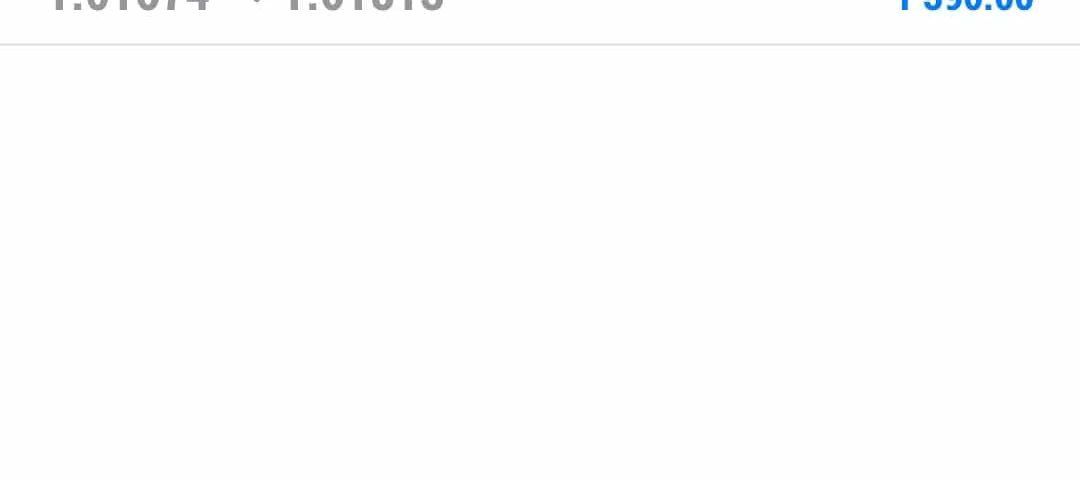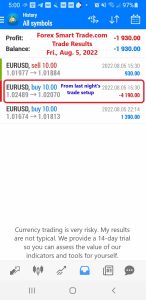In the previous lesson, we went through a trading scenario where you were using a broker that operated with a Margin Call only.
In this lesson, we will go through a real-life trading scenario where the broker operates with a separate Margin Call Level and Stop Out Level.
The broker defines the Margin Call Level at 100% and the Stop Out Level at 50%.
What happens to your margin account when you’re in a trade that goes terribly wrong?
Let’s go find out!
Step 1: Deposit Funds into Trading Account
Say you deposit $10,000 into your trading account. You now have an account balance of $10,000.
This is how it’d look in your trading account:
| Long / Short | FX Pair | Position Size | Entry Price | Current Price | Margin Level | Equity | Used Margin | Free Margin | Balance | Floating P/L |
| – | $10,000 | – | $10,000 | $10,000 | – |
Step 2: Calculate Required Margin
You want to go long GBP/USD at 1.30000 and want to open 1 standard lot (100,000 units) position. The Margin Requirement is 5%.
How much margin (Required Margin) will you need to open the position?
Since our trading account is denominated in USD, we need to convert the value of the GBP to USD to determine the Notional Value of the trade.
£1 = $1.30 £100,000 = $130,000
The Notional Value is $130,000.
Now we can calculate the Required Margin:
Required Margin = Notional Value x Margin Requirement $6,500 = $130,000 x .05
Assuming your trading account is denominated in USD, since the Margin Requirement is 5%, the Required Margin will be $6,500.
Step 3: Calculate Used Margin
Aside from the trade we just entered, there aren’t any other trades open.
Since we just have a SINGLE position open, the Used Margin will be the same as Required Margin.
Step 4: Calculate Equity
Let’s assume that the price has moved slightly in your favor and your position is now trading at breakeven.
This means that your Floating P/L is $0.
Let’s calculate your Equity:
Equity = Balance + Floating Profits (or Losses) $10,000 = $10,000 + $0
The Equity in your account is now $10,000.
Step 5: Calculate Free Margin
Now that we know the Equity, we can now calculate the Free Margin:
Free Margin = Equity - Used Margin $3,500 = $10,000 - $6,500
The Free Margin is $3,500.
Step 6: Calculate Margin Level
Now that we know the Equity, we can now calculate the Margin Level:
Margin Level = (Equity / Used Margin) x 100% 154% = ($10,000 / 6,500) x 100%
The Margin Level is 154%.At this point, this is how your account metrics would look in your trading platform:
| Long / Short | FX Pair | Position Size | Entry Price | Current Price | Margin Level | Equity | Used Margin | Free Margin | Balance | Floating P/L |
| – | $10,000 | – | – | $10,000 | – | |||||
| Long | GBP/USD | 100,000 | 1.30000 | 1.30000 | 154% | $10,000 | $6,500 | $3,500 | $10,000 | $0 |
GBP/USD falls 400 pips!
GBP/USD falls 400 pips and is now trading at 1.26000.
Let’s see how your account is affected.
Used Margin
You’ll notice that the Used Margin has changed.
Because the exchange rate has changed, the Notional Value of the position has changed.
This requires recalculating the Required Margin.
Whenever there’s a change in the price for GBP/USD, the Required Margin changes.
With GBP/USD now trading at 1.26000 (instead of 1.30000), let’s see how much Required Margin is needed to keep the position open.
Since our trading account is denominated in USD, we need to convert the value of the GBP to USD to determine the Notional Value of the trade.
£1 = $1.26 £100,000 = $126,000
The Notional Value is $126,000.
Previously, the Notional Value was $130,000. Since GBP/USD has fallen, this means that GBP has weakened. And since your account is denominated in USD, this causes the position’s Notional Value to decrease.
Now we can calculate the Required Margin:
Required Margin = Notional Value x Margin Requirement $6300 = $126,000 x .05
Notice that because the Notional Value has decreased, so has the Required Margin.
Since the Margin Requirement is 5%, the Required Margin will be $6,300.
Previously, the Required Margin was $6,500 (when GBP/USD was trading at 1.30000).
The Used Margin is updated to reflect changes in Required Margin for every position open.
In this example, since you only have one position open, the Used Margin will be equal to the new Required Margin.
Floating P/L
GBP/USD has fallen from 1.30000 to 1.26000, a difference of 400 pips.
Since you’re trading 1 standard lot, a 1 pip move equals $10.
This means that you have a Floating Loss of $4,000.
Floating P/L = (Current Price - Entry Price) x 10,000 x $X/pip -$4,000 = (1.26000 - 1.30000) x 10,000 x $10/pip
Equity
Your Equity is now $6,000.
Equity = Balance + Floating P/L $6,000 = $10,000 + (-$4,000)
Free Margin
Your Free Margin is now –$300.
Free Margin = Equity - Used Margin -$300 = $6,000 - $6,300
Margin Level
Your Margin Level has decreased to 95%.
Margin Level = (Equity / Used Margin) x 100% 95% = ($6,000 / $6,300) x 100%
The Margin Call Level is when Margin Level is 100%.
Your Margin Level is still now below 100%!
At this point, you will receive a Margin Call!
This is a WARNING that your trade is at risk of being automatically closed.
Your trade will still remain open but you will NOT be able to open new positions as long unless the Margin Level rises above 100%.
Account Metrics
This is how your account metrics would look in your trading platform:
| Long / Short | FX Pair | Position Size | Entry Price | Current Price | Margin Level | Equity | Used Margin | Free Margin | Balance | Floating P/L |
| – | $10,000 | – | $10,000 | $10,000 | – | |||||
| Long | GBP/USD | 100,000 | 1.30000 | 1.30000 | 154% | $10,000 | $6,500 | $3,500 | $10,000 | $0 |
| Long | GBP/USD | 100,000 | 1.30000 | 1.26000 | 95% | $6,000 | $6,300 | -$300 | $10,000 | -$4,000 |
GBP/USD drops another 290 pips!
GBP/USD falls another 290 pips and is now trading at 1.23100.
Used Margin
With GBP/USD now trading at 1.23100 (instead of 1.26000), let’s see how much Required Margin is needed to keep the position open.
Since our trading account is denominated in USD, we need to convert the value of the GBP to USD to determine the Notional Value of the trade.
£1 = $1.23100 £100,000 = $123,100
The Notional Value is $123,100.
Now we can calculate the Required Margin:
Required Margin = Notional Value x Margin Requirement $6,155 = $123,100 x .05
Notice that because the Notional Value has decreased, so has the Required Margin.
Since the Margin Requirement is 5%, the Required Margin will be $6,155.
Required Margin was $6,300 (when GBP/USD was trading at 1.26000).
The Used Margin is updated to reflect changes in Required Margin for every position open.
In this example, since you only have one position open, the Used Margin will be equal to the new Required Margin.
Floating P/L
GBP/USD has now fallen from 1.30000 to 1.23100, a difference of 690 pips.
Since you’re trading 1 standard lot, a 1 pip move equals $10.
This means that you have a Floating Loss of $6,900.
Floating P/L = (Current Price - Entry Price) x 10,000 x $X/pip -$6,900 = (1.23100 - 1.30000) x 10,000 x $10/pip
Equity
Your Equity is now $3,100.
Equity = Balance + Floating P/L $3,100 = $10,000 + (-$6,900)
Free Margin
Your Free Margin is now –$3,055.
Free Margin = Equity - Used Margin -$3,055 = $3,100 - $6,155
Margin Level
Your Margin Level has decreased to 50%.
Margin Level = (Equity / Used Margin) x 100% 50% = ($3,100 / $6,155) x 100%
At this point, your Margin Level is now below the Stop Out Level!
Account Metrics
This is how your account metrics would look in your trading platform:
| Long / Short | FX Pair | Position Size | Entry Price | Current Price | Margin Level | Equity | Used Margin | Free Margin | Balance | Floating P/L |
| – | $10,000 | – | $10,000 | $10,000 | – | |||||
| Long | GBP/USD | 100,000 | 1.30000 | 1.30000 | 154% | $10,000 | $6,500 | $3,500 | $10,000 | $0 |
| Long | GBP/USD | 100,000 | 1.30000 | 1.26000 | 95% | $6,000 | $6,300 | -$300 | $10,000 | -$4,000 |
| Long | GBP/USD | 100,000 | 1.3000 | 1.23100 | 50% | $3,100 | $6,155 | -$3,055 | $10,00 | -$6,900 |
STOP OUT!
The Stop Out Level is when the Margin Level falls to 50%
At this point, your Margin Level reached the Stop Out Level!
Your trading platform will automatically execute a Stop Out.
This means that your trade will be automatically closed at market price.
- Your Used Margin will be “released”.
- Your Floating Loss will be “realized”.
Your Balance will be updated to reflect the Realized Loss.
Now that your account has no open positions and is “flat”, your Free Margin, Equity, and Balance will be the same.
There is no Margin Level or Floating P/L because there are no open positions.
Let’s see how your trading account changed from start to finish.
| Long / Short | FX Pair | Position Size | Entry Price | Current Price | Margin Level | Equity | Used Margin | Free Margin | Balance | Floating P/L |
| – | $10,000 | – | $10,000 | $10,000 | – | |||||
| Long | GBP/USD | 100,000 | 1.30000 | 1.30000 | 154% | $10,000 | $6,500 | $3,500 | $10,000 | $0 |
| Long | GBP/USD | 100,000 | 1.30000 | 1.26000 | 95% | $6,000 | $6,300 | -$300 | $10,000 | -$4,000 |
| Long | GBP/USD | 100,000 | 1.3000 | 1.23100 | 50% | $3,100 | $6,155 | -$3,055 | $10,00 | -$6,900 |
| – | $3,100 | – | $3,100 | $3,100 | – |
Before the trade, you had $10,000 in cash. Now you’re left with $3,100!
You’ve lost 69% of your capital.
% Gain/Loss = ((Ending Balance - Starting Balance) / Starting Balance) x 100% -69% = (($3,100 - $10,000) / $10,000) x 100%
Some traders suffer a terrible side effect when finding out their trade has been automatically liquidated.
In the next lesson, we provide a different trading scenario where you try to trade forex with just $100.





